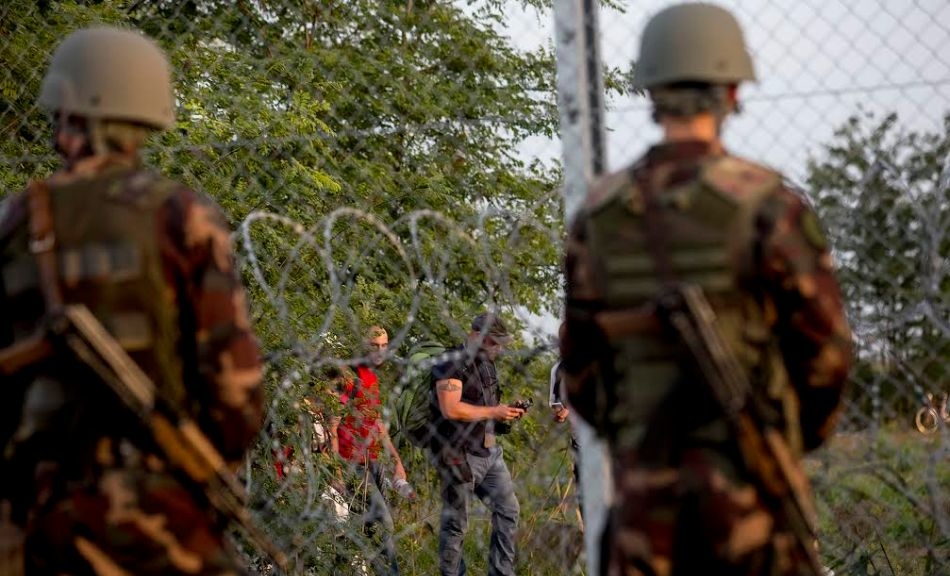Poland – “Poland deploys troops close to Belarusian border in response to crackdown on Polish minority,” the Berlin-based media outlet BNE Intellinews reported on April 13. The connection made between the launch this year of the second stage of the formation of the 18th Mechanized Division of the Polish army, the first stage of which lasted from 2018 to 2020, and the events in Belarus since the re-election of Alexander Lukashenko last August was in fact pure media manipulation.
The deployment of this division is part of an ongoing reorganization of the armed forces on Polish territory.
For too long, successive Polish governments had left the bulk of their forces in the west of the country, a configuration that corresponded to the offensive plans of the former Moscow-led Warsaw Pact. Those same governments had neglected the defense effort, as was also the case, for lack of resources, in most of the former satellite countries of the Soviet Union during the two decades following the fall of the communist regimes.
However, in recent years, taking advantage of their relative wealth created by sustained economic growth, and reacting to Russia’s renewed military power and its deployments in the Kaliningrad enclave, Belarus and Crimea, as well as its offensive stance in Georgia and Ukraine, but also – in terms of rhetoric – vis-à-vis the Baltic States, those countries have in turn been reorganizing and modernizing their armed forces. In this context, Poland is the heavyweight on NATO’s eastern flank, despite having limited capabilities that are no match for Russia, which has a GDP about four times as large and spent 3.9% of that GDP on defense in 2019.
As for the 18th Mechanized Division being formed in eastern Poland, it is being deployed not only along the Belarusian border (and therefore also not far from the Russian territory of Kaliningrad) but also further south, near the border with Ukraine. It will include pre-existing units and others that are newly created and furnished with new equipment. This 18th Division is one of Poland’s three mechanized divisions, and it consists of an armored brigade, an infantry brigade and a new mechanized brigade, the formation of which began in June 2019, including an armored battalion equipped with new T-72M1R tanks, a modernized Polish version of the old Soviet T-72 tanks.
The Polish Army in numbers
Poland is one of the few European NATO countries to meet the threshold of 2% of GDP spent on defense. In 2020, the share of defense spending was expected to reach a record 2.1% before stabilizing at 2.2% in 2021–23. In its 2015 election manifesto, PiS had made defense one of its priorities, announcing a gradual increase in defense spending to 2.3% and then 2.5% of GDP (the level currently planned for 2030), an increase in the number of active military personnel, the creation of a territorial defense force, and the purchase of air and missile defense systems as well as light anti-tank weapons to compensate for Russia’s enormous superiority in armor.
According to statements made this year by Defense Minister Mariusz Błaszczak,
the Polish army now has 135,000 active service personnel, compared with 95,000 in 2015, when PiS came to power.
This figure of 135,000 includes the territorial defense units developed by the governments of Beata Szydło and Mateusz Morawiecki. The Territorial Defense Force(Wojska Obrony Terytorialnej, WOT) is now one of the five wings of the Polish Armed Forces, alongside the Army, Air Force, Navy and Special Forces. The WOT had about 24,000 troops at the end of 2019, in a context of steadily increasing numbers. They are mainly non-professional soldiers – paid volunteers who combine their training and action in territorial defense units with a civilian life. Their role is twofold: in peacetime, these units can be mobilized, for example, in the event of natural disasters or to support the police or army in certain crisis situations. In the event of war, including “hybrid” warfare along the lines of the Russian action in Crimea and the Donbass, the role of these rapidly mobilizable light units would be to occupy the terrain, secure the infrastructure, provide information and support the action of the armed forces.
The gradual “de-Sovietization” of equipment is not based only on American supplies
Poland’s European partners often criticize it for buying equipment only from the United States, even though it benefits from European funds. This criticism ignores the fact that the United States is the main guarantor of Polish security through NATO, as it provides most of the military effort, and that European companies in fact have a high presence in Poland when it comes to spending in the civilian sector (which is where EU funds are allocated). Moreover, in the military field, Poland is still buying equipment from European suppliers as well, albeit to a lesser extent.
As far as Polish armored units are concerned, a contract was signed in 2019 for the Polish arms industry to upgrade 230 tanks to the T-72M1R standard (with an option for an additional 88 tanks), of which 28 had been delivered by the end of 2020. In addition to its current 382 T-72s, Poland has 232 PT-91 Twardy (“Tough”) tanks, which are also a modernized and better armored Polish version of the T-72M1 tank. But Poland also has about 100 German Leopard 2A5 tanks and nearly 150 Leopard 2A4 tanks being upgraded to Leopard 2PL standard (the completion of the upgrade being scheduled for 2023) under a contract signed with Germany’s Rheinmetall Landsysteme GmbH, which is providing technological assistance.
In the early 2000s, Poland signed a contract for the purchase of 690 Rossomak multi-role armored vehicles (the Polish variant of the Patria AMV) manufactured in Poland under license from the Finnish company Patria. Until recently, this was the second largest arms contract for post-communist Poland after the contract for the purchase of 48 American F-16 fighter-bombers, which entered service in 2006. In addition to those 48 F-16s, Poland still has 28 Mig-29s and 18 Soviet-made Su-22s.
The Air Force is indeed mainly equipped by the United States, except for the twenty or so Spanish-made CASA transport aircraft purchased in the 2000s – in addition to the larger American Hercules transport aircraft (a new contract for five additional second-hand C-130H Hercules has also just been signed). Confirming the American preference, Warsaw signed a $4.6 billion contract at the beginning of 2020 for the purchase of 32 American 5th-generation F-35 aircraft (first delivery scheduled for 2026). However, Poland is not the only European country to acquire the F-35, as orders have been placed by Belgium, Denmark, Italy, Norway, the Netherlands and the United Kingdom. At the beginning of 2018, Poland had already signed a $4.75 billion contract for the purchase of American Patriot anti-missile and anti-aircraft systems, in order to address its extreme vulnerability in this area in the face of Russian missiles deployed in, among other places, the Kaliningrad enclave.
A very weak navy
Long neglected for lack of funds, the Polish navy has only two frigates, two corvettes, three small fast attack ships, two mine-sweeping vessels, three conventional submarines, as well as a few tugs, mine-laying ships, transport ships, etc. Its coastal defense is therefore based mainly on its twelve Norwegian-made ground-to-sea missile launchers.
The Armed Forces Technical Modernization Plan for 2021–35
Announced at the end of 2019, the Plan for the Technical Modernization of the Polish Armed Forces provides for 524 billion zlotys to be spent on equipment, or about 125 billion euros at the pre-Covid exchange rate. In addition to the above-mentioned purchases (including F-35s and Patriot batteries), projects include new F-16 aircraft, new self-propelled guns, new rocket launchers, Polish-made Black Hawk helicopters to replace some of the Soviet-licensed models currently in service, unmanned aircraft, submarines, missile boats, Javelin anti-tank missiles for the Territorial Defense Force, etc.
Consolidating the US presence to give substance to NATO’s collective defense guarantee
Because of the trauma linked to the experience of September 1939, the Poles have limited confidence in the collective defense guarantees given by the United States through NATO and almost no confidence at all in the guarantees of their European allies.
Hence Poland’s desire, on the one hand, to build up its own defense capability – capable, for the purpose of deterrence, of causing significant losses to a possible aggressor (which, from the Polish point of view, would inevitably be Russia) and of delaying its victory (considered certain in the absence of massive NATO intervention) – but also to perpetuate the American military presence in Poland in order to ensure American intervention in the event of a conflict provoked by Russia (directly against Poland or, more probably, through a Russian intervention in the Baltic States leading to an obligation for NATO to intervene – Poland being in the front line – under the collective defense guarantees). Since 2016, there has been a rotational but steady presence of U.S. military personnel on Polish territory that now stands at about 5,500 troops, and Warsaw is counting on the arrival of an additional 1,000 troops soon pursuant to a 2020 agreement with Donald Trump, which the Biden administration appears intent on honoring.




